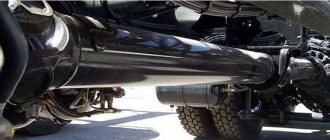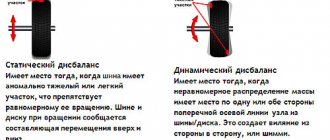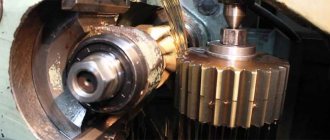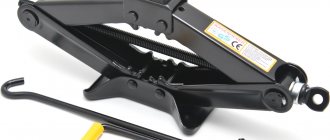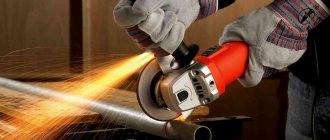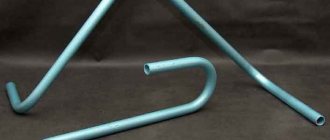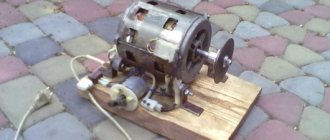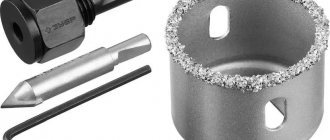Wheel balancing is the elimination of imbalance of a car wheel by shifting the center of rotating masses as close as possible to the axis of its rotation. The need for such a procedure arises when the mass of tires and wheels is displaced relative to their axis of rotation. Because the imbalance is transmitted to the car’s suspension elements.
Balancing the wheels on a car prevents excessive vibration of the steering wheel and body while driving, and also helps prevent deterioration in handling and premature wear of wheel bearings, ball joints and suspension silent blocks.
In this article we will talk in detail about when you need to balance wheels, how this procedure is carried out and whether you can do it yourself, as well as answer other frequently asked questions about wheel balancing.
What is wheel balancing?
Wheel balancing is the procedure for preventing imbalance between wheels, rims, hubs, suspension parts and fasteners.
The need for periodic operation is due to centrifugal force. During the balancing process, the mass of the wheel is located evenly relative to its center. When the procedure is performed correctly, vibration during vehicle operation is reduced and the service life of bearings and car tires is increased.
Benefits of wheel balancing:
- Comfortable ride on roads of any type and quality.
- No unnecessary noise from car wheels.
- Increased wheel usage.
- Ease of driving at various speeds.
- Car tires wear out equally and evenly on all sides.
Wheel balancing is required for any car, regardless of the condition of the wheels, tires or the newness of the model.
Consequences of not balancing wheels:
- Frequent bearing failures.
- Steering wheel vibration during vehicle operation.
- Early and uneven wear of car tires.
- Noise in the cabin.
- Immediate shock absorber failure.
- Unsafe movement due to each wheel acquiring its own centrifugal force.
- In advanced cases, the vibration of the wheels causes the bolts to become unscrewed and the ball joint to fly out or fall off.
Finding balance
We will start, as always, with theory. As you probably know, a car wheel consists of a disk and a tire that is mounted on it.
Since there is nothing ideal in our world, it is impossible to achieve the ideal shape of these elements, which is why the mass relative to its center is distributed unevenly and a so-called imbalance appears.
Experts distinguish several types of this unpleasant effect:
The first occurs if the axis of rotation and the axis of inertia are displaced relative to each other. Simply put, if such a wheel is spun, it will begin to jump, as it were, in a vertical plane and will quickly stop on its own.
Dynamic imbalance is characterized by incorrect distribution of mass across the width, which causes the wheel to vibrate in different directions during rotation.
In general, balancing is designed to combat the above-mentioned troubles, and with a competent approach, these troubles are completely eliminated.
Why do you need wheel balancing?
Static and dynamic wheel imbalance
As already mentioned, wheel balancing is needed to evenly distribute the mass of the wheel relative to its axis or, in other words, to eliminate imbalance. Experts divide wheel imbalance into two types:
- Statistical. The center of gravity shifts along the axis, resulting in an uneven distribution of the wheel mass along its length.
- Dynamic . This is when the axis of inertia does not coincide with the axis of rotation. In this case, the intersection of the axes occurs at an angle, which leads to uneven distribution of the mass in width.
The existing imbalance can be determined visually by lifting the car on a jack and spinning the wheel, as well as using special diagnostic equipment. The second option guarantees a more accurate result, and is provided as an available service at any tire shop or service station.
Causes of imbalance
Imbalance can arise for various reasons. So, for example, you could hit a hole, hill or obstacle at high speed, which led to mechanical deformation of the wheel. Also, imbalance occurs due to poor quality, heterogeneity of the valve material. In other words, if your wheel doesn't look like a perfect circle, the more likely it will be out of balance.
Imbalance options:
- Static, when the axis of rotation is parallel to the axis of inertia, which is characterized by a displacement of the center of gravity from the axis of rotation and an uneven distribution of the total mass occurs. If you spin a rim with a tire, you can easily notice such a deviation; the wheel will seem to “jump” as it rotates.
- Dynamic, when the axis of inertia does not coincide with the axis of rotation. In this case, the center of gravity does not shift, but both axes intersect at a certain angle. In simple words, the weight of the wheel due to dynamic imbalance is incorrectly distributed across the width.
Dynamic imbalance often occurs on wide profile tires. But it is not uncommon for a disc to be affected by two types of imbalance simultaneously. But they can be easily eliminated if you use a balancing machine. The manufacturer of the equipment in this case is completely unimportant. The quality of the repair will be influenced not only by the qualifications of the specialist, but also by the condition of the working machine and the wheel alignment cone, that is, it is important to regularly care for the equipment, carry out maintenance, calibration and testing.
In the case of racing cars, finishing balancing is carried out. How do experienced craftsmen do this? The car is suspended on a special stand and the wheel is spun up to 90 km/h. Using a computer, all the necessary measurements are taken and the location for installing the appropriate weight is determined. Although this type does not at all serve as a replacement for stationary balancing, and before the finishing procedure, the disk of a racing car must be processed on a stationary stand.
In addition, it is worth noting the existence of another type of balancing - automatic, it is used for small wheels of a truck, motorcycle, and bus. The inner part of the disk is covered with special granules. When driving, these substances stick to the inside of the tire. This is how automatic balancing is carried out.
There is a separate category of cars without a central hole. Balancing in this case is carried out according to the holes for the bolts. This uses a flange adapter.
Effects of vibration
- The action of undesigned loads on the load-bearing parts and mechanisms of the vehicle’s suspension system causes accelerated wear and, first of all, the bearings in the hubs are destroyed. The destruction of the bearings threatens the loss of the wheel in motion, which can lead to a traffic accident with serious consequences.
- Wheel vibration transmitted to the tires reduces traction as the characteristic contact patch becomes inconsistent and unstable. At the same time, the braking distance lengthens and the vehicle's handling deteriorates. Thus, driving safety suffers.
- Vibrating mechanical load on the tread causes rapid and uneven wear. This reduces its technical parameters and leads to the need for frequent tire replacement.
- Increased vibration of the wheels during movement, transmitted to the steering wheel, causes discomfort and rapid fatigue of the driver.
How to balance a set of tires at home?
DIY balancing device
If a tire service is unavailable or if you want to save money, you can balance the wheels yourself using a machine that can be assembled in a garage. The simplest garage balancing stand consists of a hub securely mounted on a rigid support with a flat base.
Balancing must be done in the following order:
- Fasten the wheel, cleaned of dirt, to the hub and spin it by hand.
- During rotation, observe the beating of the rubber, the “figure eight” of the disk.
If there are strong pronounced deformations and runout, balancing is unlikely to help. - Wait until the wheel stops and is balanced, put a chalk mark at the top point.
- Turn the wheel 90 degrees (a quarter turn) in both directions several times, waiting for it to stop after each turn.
- If the wheel is in a different position each time, there is no pronounced static imbalance, it is “conditionally balanced.”
- If the mark is always at the top, the main point of imbalance has been identified, you can begin to eliminate it.
The faster the wheel returns to the top position, the more weight is needed. Its exact value can only be predicted experimentally. Without experience, you can start with a load weighing 20–30 grams. - To eliminate the imbalance, you need to hang (without fixing it securely) a weight opposite the mark and repeat step 4.
- If, after hanging the weight, the mark still appears at the top, its mass must be increased; if it now goes down, it must be reduced.
- It is necessary to adjust the weight of the weights until the wheel, after spinning 90 degrees, stops in any position. When the optimal set of weights has been selected, they can be fixed.
For a more uniform distribution of masses, you can use several weights: for example, instead of one for 40 grams on the outer side, attach 20 gram weights on the outer and inner sides opposite the mark.
The described method is a static balancing designed to shift the center of mass of the wheel as close as possible to the axis of its rotation. It allows you to eliminate very large imbalances with an accuracy acceptable for cars that do not drive fast, but is not suitable for fine adjustments of balance. This is acceptable wheel balancing for VAZ classics and other similar models.
More accurate balancing of car wheels at home is possible using a “spinning top” shaped device. The tool can be made on a lathe from a solid steel blank (moreover, steel is harder than the common ST-3) with a diameter of about 150 mm, so that the structure is monolithic and balanced.
Aluminum and other soft metals are not suitable because the ends of the spindle axle must be rigid and not deform or become dull under the weight of the wheel!
The tool should have a slight taper on one side that turns into a thread. The conical shape is needed so that the wheel self-centers when the nut is tightened.
The balancing process is carried out as follows:
Balancing a wheel at home: video
- Place the “top” in the central hole of the disk and tighten it with a nut.
- Place the wheel with the tip of the “top” on a flat, hard surface or in a stand with a recess.
- Move the wheel and release it, controlling the position in space. A balanced wheel should independently occupy a horizontal position and return to it after rocking. If there is an imbalance, it will not stay “in the horizon”.
- If an imbalance is detected, you need to take a weight and place it at the highest point of the wheel, and then repeat step 3. If the same section still rises with the load, its mass must be increased; if it begins to fall, decrease it.
- The weight of the weights is selected until the wheel on the spoke begins to take a horizontal position and returns to it after each rocking. The static balancing of the wheel is completed, and if high accuracy is not required, then it can be placed on the car. If you also need to eliminate dynamic imbalance, then you need a rigid tripod (for example, a laboratory one) with chalk and the following further actions:
- The wheel is manually spun on the top to the maximum possible speed.
- With the help of a small wooden block, lightly pressed against the upper edge of the top, the vibrations introduced during spinning are dampened.
- The tripod arm with the chalk attached is smoothly brought to the wheel rim until it makes the first contact.
- After several revolutions of the wheel (and touching the chalk), you need to stop it and see at what point the chalk touches the disk.
- At the point where the chalk touches, a weight should be secured (the weight is selected experimentally), and a second weight of the same weight should be secured on the diametrically and diagonally opposite side of the rim. This is necessary to prevent static imbalance.
- Experiment with the weights until the beating of the wheel goes away and it stops touching the chalk with one point.
Self-balancing in a garage cannot fully replace the procedure on modern equipment due to low accuracy. Therefore, if possible, it is better to visit a service station and eliminate the imbalance completely. This is more reliable, and taking into account the considerable labor required to balance large wheels, it is also much easier.
How to carry out balancing
This operation is not particularly difficult, but to perform it you need a specialized balancing machine with a special fastening cone that automatically centers the wheel. The wheel is spun on a machine and, with the help of lead weights attached to the disk, its position is achieved as randomly as possible when stopping. This is called rough balancing.
For accurate balancing, you need an electronic machine into which the wheel parameters are loaded. With the help of such a stand, balance is automatically measured in different positions of the wheel, and information is displayed on the screen about the places where the weights should be installed and their weight.
Weights are made of lead and can be padded or adhesive. The latter are glued inside the wheel rim, they are not visible to the eye, they do not spoil the appearance of the wheels.
But for winter it is better to use padded weights. The thing is that in winter, due to increased temperature fluctuations, the linear dimensions of the disks change. And such fluctuations do not have the best effect on the properties of the adhesive tape that secures the balancers. It will be easy to knock off such a “played up” weight with a stream of water at the sink. But, there are disks on which it is not possible to put weights; their balancing is carried out only with adhesive balancers.
To perform high-quality work on wheel balancing, it is necessary not only to correctly configure the machine itself, but also to have a certain skill. These two factors together influence the final result.
And, if you can also evaluate the work of a tire fitter visually, then here is the accuracy of the equipment settings, the date of its last calibration, etc. you won't determine. It is for this reason that balancing should only be done in a trusted place that you trust.
Equipment
It is important to prepare the wheels for the balancing procedure, namely, thoroughly clean the tread and disk from sand and dirt. If this rule is neglected, the operation may be performed inaccurately and will have to be repeated. If the car has already been balanced, the technician must remove the balancing weights before starting.
It is very important to check the tire pressure: the tires should not be flat. Before balancing the wheels, the center of gravity is determined, which is monitored by balancing machines. Devices can range from ordinary computers to huge systems with laser sensors and measurement mechanisms. Once determined, the machine automatically installs the balancing weight.
To carry out the procedure, a balancing machine is used, which aligns the position of the wheel along the center of the rotation axis during the procedure.
The type of balancing weight depends on the type of discs. Weights with fastening brackets are installed on steel disks, and with landing on the inside - on cast disks. They are mainly made from zinc, lead or steel.
Weight also depends on the level of imbalance. The weight of the balancing weight with bracket fasteners varies from 5 to 100 g. The weight of the weight for alloy wheels is from 5 to 60 g.
The complexity of the procedure also depends on the mass. The larger the weight, the more likely it is that the wheel needs to be checked for its external qualities: tread condition and general geometric qualities such as symmetry.
In the cold season, due to temperature fluctuations, adhesive weights may come off, which cannot happen with padded ones.
There are special types of weights for stamped wheels. They are stuffed between the disk and the tire, installed on the edge of the disk. Padded weights are not suitable for low-fusible discs. For this type, there are Velcro - self-adhesive weighting agents with an adhesive base. They are practically invisible, because they practically do not stand out from the general appearance. However, they are used only on a perfectly flat surface.
The process of balancing car wheels
The procedure for balancing a car starts with removing the discs, regardless of the characteristics of the model. Balancing occurs according to the following method: remove the wheel, balance it, put it back, then move on to the next one. This completes the procedure for all wheels.
The result depends mostly on the artist, and only a small part is due to the equipment. If the device is modern, then the specialist can only monitor the condition of the rubber and the progress of the procedure.
After cleaning the tread from stones and dirt, a plate is selected, depending on the number of holes in the disc. The specialist places the plate on the disk, tightening the nuts well. After that, he goes to the machine to balance the wheel.
Before balancing, remove any dirt or stones from the tire tread.
After identifying the problem area, the process of installing weights begins. Upon completion, the master returns to the equipment and re-checks the geometric condition of the wheel. If the procedure is successful, the wheel is installed in its place and the next one is taken. Otherwise, the procedure is repeated.
What errors can occur during balancing?
- The imbalance cannot be determined unless the tire is cleared of stones and dirt.
- Installing new weights without removing old ones.
How to check wheel balance
You can check it yourself. If you feel that on a flat road, when you release the steering wheel, the car immediately throws to the side, or you feel that the steering wheel vibrates with a certain frequency, then this is a sign of imbalance.
Place the car on a jack. Draw a transverse line on the rubber with chalk. Spin the suspended wheel. A bent wheel, a figure eight, you can see right away.
Video
Training video for those who want to purchase a machine and engage in this business. How to learn how to balance wheels.
One of the options for a balancing machine.
Boarding and balancing.
What is the danger?
It would seem that what can happen if wheel balancing is not done in a timely manner? We often forget that each wheel has its own individual weight, pressure, technical characteristics, oval shape and defects. Therefore, the issue of balancing it is very important.
If this is not done, the consequences may be as follows.
The braking distance of the car increases.
This is easy to explain - the contact area between the tire and the asphalt decreases, grip deteriorates, and traffic safety decreases.
Controllability decreases.
The reasons are the same as in the previous case.
There is a beating in the steering wheel.
The imbalance in the wheel is transmitted to the suspension, and then to the steering wheel. The stronger it is, the greater the vibrations the driver feels. In this case, driving a car is very dangerous.
Suspension wear accelerates.
Poor balancing (or lack thereof) most affects the suspension bearings and hubs. Due to imbalance, these elements of the chassis system may even collapse. The result is loss of controllability and the likelihood of an accident.
Increased tire wear.
The reasons are uneven distribution of forces and the appearance of vibration. Essentially, the tires will be “eaten up” on one side.
How much does it cost to balance wheels?
Here, of course, everything depends on the tire service or the tariff schedule of the car service. In principle, wheel balancing is not that expensive. First of all, the wheel diameter affects the cost of wheel balancing. It is logical that the larger the wheels, the more expensive it is to balance them.
The cost of wheel balancing is also affected by the type of disc used on the wheel. Typically, it costs less to balance a wheel with a steel rim than a wheel with an aluminum rim. In addition, the final cost of balancing will be influenced by the type/type of weights (counterweights) used.
When the seasonality of tires changes at a tire shop, as a rule, wheel balancing is included in the total bill for services.
On average, the cost of balancing one 15-inch wheel with a steel disc in Russia is 170 rubles. Accordingly, to check and balance four wheels you will have to pay an average of 680 rubles.
There are, of course, many garage tire shops in Russia that are ready to provide this service at a cheaper price. But don’t forget that there are also premium tire shops where wheel balancing usually costs a hefty sum (even more than tire fitting at a dealer).
Please note that this average cost does not include wheel removal and installation. So feel free to add an average of 50-100 rubles to the cost of balancing for a 15-inch wheel.
Signs of poor quality work
Wheel balancing is not always done well. There are several factors by which this can be determined:
- The service station does not take any measurements before carrying out work. A good mechanic should definitely check the wheel and tire runout parameters. At the same time, it is advisable to do this as accurately as possible, taking into account radial and lateral runout;
- All dirt from the tire and excess elements from the tread must be removed. If this is not done, then balancing becomes a completely useless exercise. Before starting work, the wheel must be perfectly cleaned;
- Pay attention to the appearance of the balancing machine. If it is dirty, then it is very difficult to count on accurate data and high-quality balancing.
How often should your car wheels be balanced?
Most often, the question of how often a car's wheels need to be balanced also arises for beginners. There are no clear standards for when to balance or after what mileage. But experienced drivers still make some suggestions when it is worth balancing car wheels.
The first and most important rule is that every time you change tires, whether they are new or used, the car’s wheels are balanced in order to equalize the centrifugal force, since changing wheels or tires shifts the center of traction. In terms of mileage, it is recommended to carry out balancing after every 5,000 kilometers of a vehicle running on the same wheels.
In case of suspension repairs or frequent driving on bad roads (hitting potholes), it is worth balancing the wheels more often than 5000 kilometers; it is usually recommended after 1000-1500 kilometers. If vibration occurs in the body, in the cabin, on the gearshift lever or steering wheel, often at speeds of 60 km/h and above, balancing should not be postponed.
The conclusion is quite simple, car wheels need to be balanced every time you change shoes or tires, plus, given the condition of the roads, wheel balancing needs to be done more often.
Types and causes of imbalance
Vibrations (imbalance) during movement are of two types:
- Longitudinal, they are also dynamic - the wheel deviates from side to side, the wheel seems to wobble. The likelihood of longitudinal imbalance is higher on wide tires because they are comparatively heavier, which means they have a greater inertial force. When the car turns, the direction of inertia of the wheel shifts from its axis of rotation, the wheel begins to “walk”, and the steering wheel begins to vibrate;
- Vertical, they are also static - the wheel deflects from top to bottom, the wheel seems to bounce. It can appear on any wheels if the weight is unevenly distributed around the circumference. With such an imbalance, the suspension most quickly fails;
- Often a combined type of imbalance occurs, when the wheel throws in all directions. This is not a death sentence, and such an imbalance can be corrected.
Is balancing necessary every season when replacing wheel assemblies?
When changing tires seasonally, some drivers balance the wheels, believing that this procedure eliminates steering wheel wobble or suspension problems. Other motorists, on the contrary, believe that when replacing wheel assemblies it is not at all necessary to carry out balancing, and the need for it is simply explained by the desire of service shops to earn more money.
The benefits of wheel balancing. Wheel balancing is a useful procedure that allows you to align the center axis of the wheel with respect to both sides. To do this, small weights are hung on the disks. As a result, the driver receives several advantages:
- Improves vehicle handling
- Eliminates the possibility of steering wheel beating
- Knocks in the suspension are prevented
- The trip becomes more comfortable
Most masters consider the balancing procedure necessary, because without it, at speed you will feel discomfort due to the beating of the steering wheel, subsequently the suspension will fall apart, and the car will be difficult to control. It is unlikely that any master will voluntarily refuse to carry out the balancing procedure, because this is a good additional income for him.
Most showrooms offer wheel balancing using special equipment; it helps determine wheel deviations and eliminate them. By placing small weights on the rims, the craftsmen achieve the ideal position of the wheel; the owner can be sure that the wheel will not spin out at speed or fall off while driving, and the suspension will last much longer.
Problems with wheel balancing. Despite the benefits, wheel balancing is not a repair solution to solve all problems. In addition, it should be borne in mind that the quality of the procedure largely depends on the experience of the master. It happens that motorists immediately after balancing go to another workshop, carry out a second check and it turns out that the wheels are unbalanced and require urgent balancing.
In this case, most likely, low-quality equipment was used. As a result, drivers pay twice and wonder why they should carry out balancing at all if they do it poorly. Not very large service stations, as a rule, use cheaper equipment; moreover, it can be adjusted instead of replaced, which also leaves a mark.
To avoid problems, it is best to carry out balancing in a center where masters use modern equipment and constantly test and improve it. This way you can be sure that the procedure will be carried out correctly and efficiently. It’s still not worth giving up balancing completely, since the safety of the driver and passengers on the road directly depends on it.
Bottom line. Although many motorists consider wheel balancing to be a completely optional procedure, you should not refuse it. It would be better to contact a specialized tire center, where they only balance wheels, use the most modern equipment, test and constantly improve.
It is worth remembering that not only driving comfort, but also the safety of passengers and the driver depends on the position of the wheel rims.
Errors during the procedure
If the balancing process is carried out in violation of the technology, then the vibration problem, at best, will not be solved, and at worst, it will further worsen. The most common mistakes:
- Balancing when there is dirt on the wheel. Even pebbles stuck in the tread can be disrupted by additional imbalance. The overall picture, even with precise equipment, will be disrupted, and it will not be possible to bring the wheel to zero.
- Balancing a wheel with a broken tire or wheel geometry. If the disc has even minor dents or distortions, it must first be rolled on a special machine. Straightening the disc with a hammer or other impact instruments is unacceptable.
- Incorrect torque of the hub bolt on the balancing machine. Excessive force will lead to the wheel being misaligned and the balancing will be incorrect.
- Violation of technology for installing a tire on a disk. Often, even experienced installers perform work in violation of technology. As a result, the wheel is given additional inertia.
- Misalignment during installation of the wheel on the vehicle axle. This problem occurs due to incorrect tightening of the bolts. Even if a properly balanced wheel is installed skewed, it will vibrate.
In order to avoid such troubles, you need to carefully choose a car service and supervise the work of the technicians. Qualified specialists guarantee their work and show the balancing results on the machine display. If the master prohibits the presence of the car owner during work or does not provide a guarantee, it is advisable to refuse his services.
Wheel balancing is an important element of monitoring the technical condition of a vehicle. A timely procedure will help not only improve safety and driving comfort, but also extend the life of the vehicle by preventing premature wear of chassis parts.
- Author: Andrey
Rate this article:
- 5
- 4
- 3
- 2
- 1
(12 votes, average: 4.5 out of 5)
Share with your friends!
Home →
With your own hands →
Reasons for mandatory work
It is imperative to check and perform balancing in the following cases:
- when transferring the car to summer and winter operating modes (seasonal tire replacement);
- after sharp impacts on the wheel when falling into a hole or hatch, hitting a curb, speed bump at high speed, etc.;
- mandatory balancing every 15,000 km (manufacturers' requirement);
- before planning a long trip to regions where there are no service stations;
- If you have an aggressive driving style, it is recommended to carry out work every 7-8 thousand km. Remember that wheels are one of the factors for your safety and the safety of other road users.
